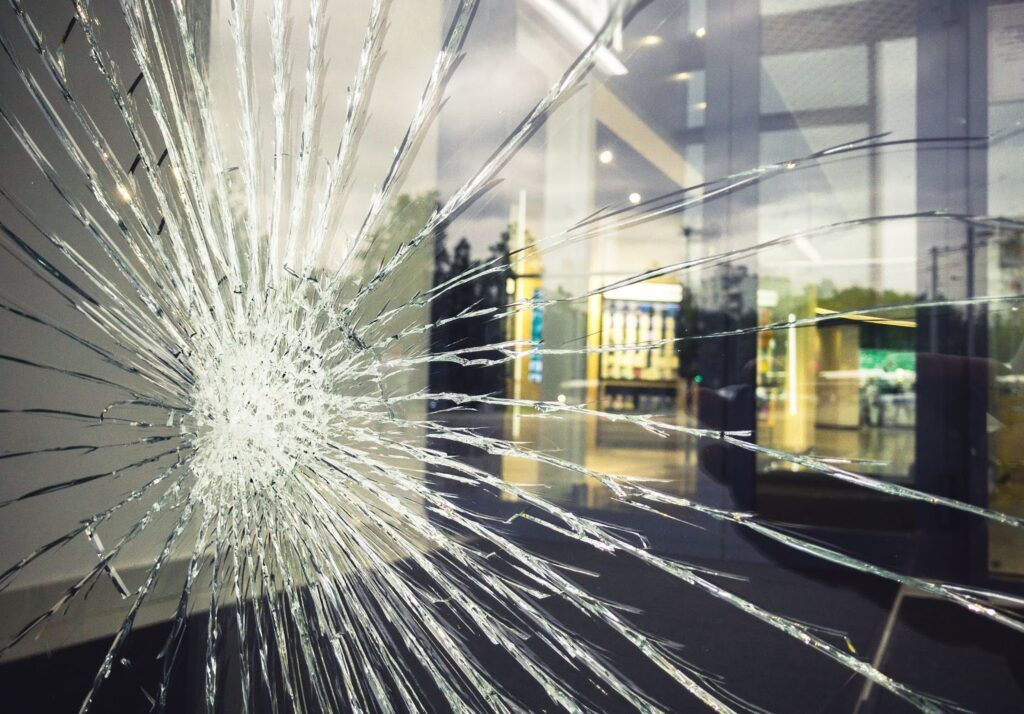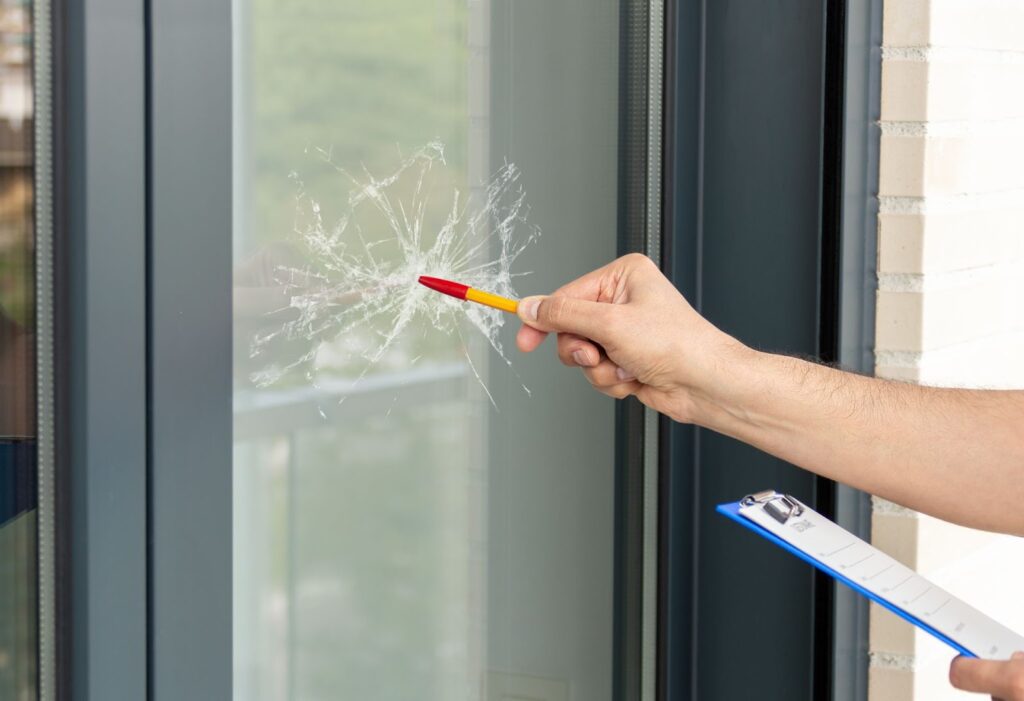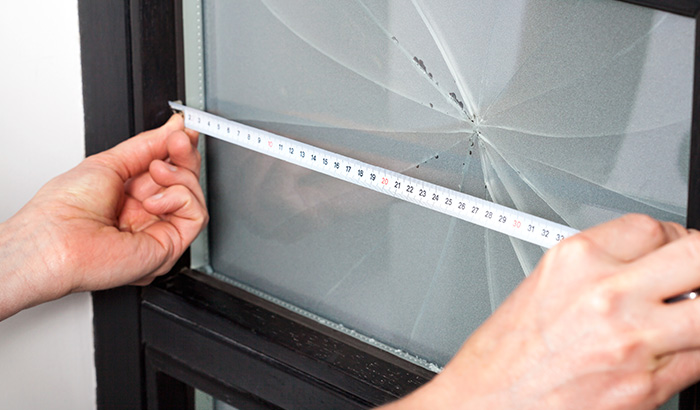Cracked glass can be a frustrating and potentially costly issue to deal with. Understanding whether you can repair the crack or if replacement is necessary is important, no matter what type of glass it is.
This article aims to answer some of the most frequently asked questions about cracked glass. From the possibility of DIY repairs to the factors determining repair versus replacement, we’ll provide you with the information you need to make an informed decision. Keep reading to learn more.
Your Questions Answered
1. Why does glass crack in the first place? Glass can crack due to various reasons. One common cause of glass cracking is thermal stress. When glass undergoes rapid temperature changes, such as extreme heat or cold exposure, it can expand or contract unevenly.
This imbalance in thermal expansion or contraction puts stress on the glass, leading to cracks. For example, placing hot glassware directly in cold water or exposing it to an open flame can cause thermal stress and result in cracking.
Another reason for glass cracking is mechanical impact. Glass can break when subjected to a significant impact or force, such as a heavy object dropping on it or a strong collision. The impact can create stress concentrations in the glass, leading to cracks. Impact cracks typically radiate in a starburst pattern from the point of impact.
Furthermore, certain types of glass, such as tempered or laminated glass, can crack under specific circumstances. Tempered glass, which is designed to shatter into tiny, less dangerous pieces when broken, can still crack under extreme pressure or if it experiences a severe impact. Laminated glass, composed of two or more layers of glass with an interlayer, may crack if the interlayer is damaged or compromised.
It’s important to note that glass inherently has microscopic cracks that act as potential weak points. These microscopic cracks can seed larger fractures when subjected to stress or pressure. However, glass made without these internal cracks, such as fiberglass, tends to be less fragile and more resistant to breaking.
2. What types of glass are there? Glass is a versatile material with different types of glass available for different purposes. Some of the most common types of glass include:
- Float Glass: Float glass is the most common glass used in windows and doors. It is transparent and made by floating molten glass on a bed of molten tin, resulting in a smooth and flat surface.
- Tempered Glass: Tempered glass is a type of safety glass made by heating float glass to high temperatures and rapidly cooling it. This process makes the glass much stronger and more heat-resistant than regular glass. If tempered glass does break, it shatters into small, relatively harmless pieces instead of sharp shards.
- Laminated Glass: Laminated glass consists of two or more glass sheets with an interlayer of plastic (usually polyvinyl butyral) between them. This interlayer acts as a bonding agent, making the glass less likely to shatter. Laminated glass is commonly used in high-impact areas such as windshields, skylights, and areas where safety and security are desired.
- Insulated Glass: Also known as double-glazing or double-pane glass, insulated glass consists of two or more glass panes separated by a sealed air or gas-filled space. This design provides better insulation and noise reduction compared to single-pane glass.
- Tinted Glass: Tinted glass is manufactured by adding colorants to the glass during manufacturing. This process results in a variety of hues and shades. Tinted glass reduces glare, filters out harmful UV rays, and provides privacy while still allowing light to pass through. It is commonly used in car windows and office buildings.
- Frosted Glass: Frosted glass is a type of glass that has been rendered opaque by sandblasting or acid etching. It allows light to pass through while providing privacy by obscuring the view. Frosted glass is used in bathroom and shower doors and decorative applications.
Other types of glass are available for different applications. It all depends on what you need.

3. How long can I wait to repair the cracked glass? Choosing to repair cracked glass as soon as possible is generally recommended to prevent further damage and potential safety concerns.
While there is no specific time limit for cracked glass repair, it’s important to note that the longer you wait, the higher the risk of the crack spreading or the glass becoming more damaged. Cracks in glass can weaken its structural integrity, making it more susceptible to breaking under stress or impact.
4. Can you repair the cracked glass? Yes, it’s possible to repair cracked glass sometimes. It all depends on how severe the crack is. For small cracks in glass, you can attempt to fix them yourself using a few basic supplies.
To repair a small crack in glass, you will need a steady hand and the following supplies:
- Glass adhesive or epoxy: Choose a high-quality glass adhesive or epoxy specifically designed for glass repairs. Epoxy is an adhesive that comes with resin and a hardener. When you mix these two components, they form a chemical reaction that hardens the epoxy, allowing it to form a strong bond.
- Clean cloth: Use a clean cloth to wipe the cracked area and ensure it is free from debris and dust.
- Razor blade or sharp blade: Scrape away any excess epoxy after the repair is complete.
The process of repairing cracked glass typically involves applying the glass adhesive or epoxy to the cracked area according to the manufacturer’s instructions. After applying the adhesive, removing any excess may be necessary and letting the repaired glass cure for a certain period of time.
It’s essential to keep in mind that the success of repairing cracked glass depends on several factors, including the size and location of the crack. It’s always a good idea to consult a professional glass repair service or follow specific repair guides to ensure the best results.
5. Will the repaired area be as strong as before? When properly repaired, the strength of the glass in the repaired area can be restored. However, it’s important to note that the repaired area may not be as strong as the original, undamaged glass. The overall strength and durability of the glass may still be compromised to some extent.
6. Should you replace the cracked glass instead of repairing it? Several factors must be considered when deciding whether to replace or repair the cracked glass. In general, small cracks that are not extensive and do not impede the function of the glass can often be repaired, while larger or more severe cracks may require replacement.
Here are some considerations to help you make the decision:
- Size and severity of the crack: Small cracks, such as those less than 6 inches long, can often be repaired successfully. However, larger cracks or those that have spread extensively may require replacement.
- Location of the crack: The location of the crack can affect whether repair is possible or if replacement is necessary. Cracks that are in your field of vision, particularly for windshields, may interfere with visibility and require replacement for safety reasons.
- Functionality and structural integrity: If the cracked glass affects the functionality or structural integrity of the object, such as impairing the sealing or compromising safety, it may be necessary to replace the glass rather than repair it.
- Cost considerations: In some cases, repairing small cracks can be more cost-effective than replacing the entire glass. However, if the crack is extensive or requires professional repair services, the repair cost may approach or exceed the replacement cost. If replacing the window is cheaper than repairing it, it makes sense to replace it.
Ultimately, the decision to repair or replace cracked glass depends on the specific situation, taking into account the size, severity, location, functionality, and cost.

Repair or Replace Your Cracked Glass With Murray Glass
If you’re dealing with cracked glass and unsure whether it can be repaired or if replacement is necessary, don’t fret! Murray Glass is here to help. Our team of professionals specializes in cracked glass repair and can assess your situation to provide the best solution. Don’t let that crack compromise your safety and aesthetics any longer. Reach out to Murray Glass today at 801.262.3364 or visit our website to schedule a consultation. Trust the experts for all your cracked glass repair needs!





